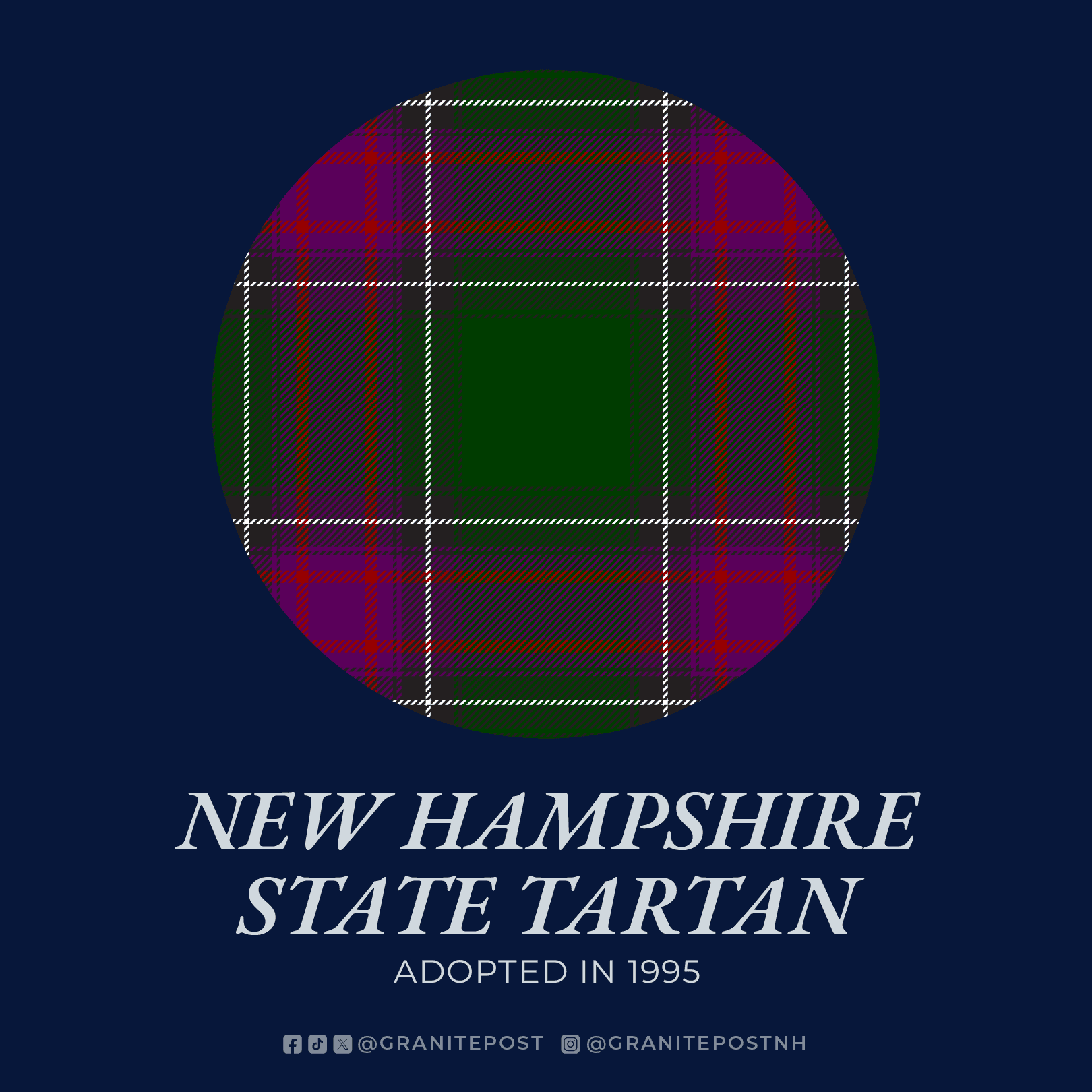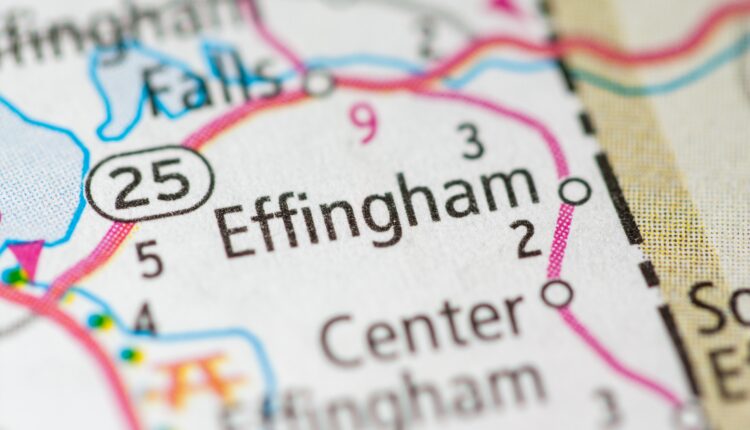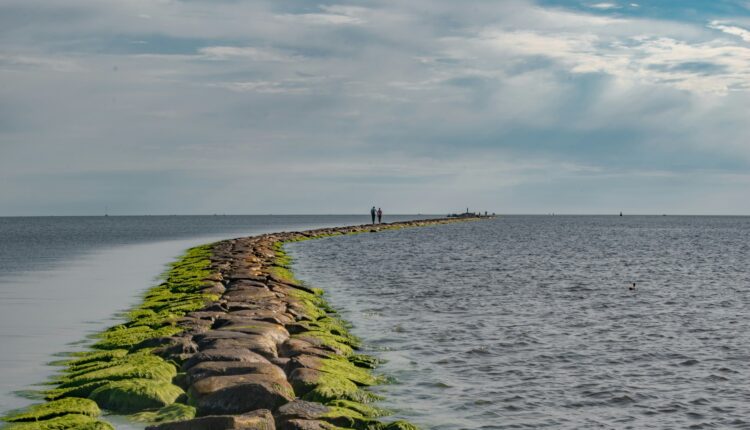
The New Hampshire state tartan weaves together aspects of state culture.
Did you know New Hampshire has its own fabric?
The state tartan (a plaid-like fabric used in Scottish culture) was designed by Ralf L. Hartwell in 1993 to celebrate the 20th anniversary of the NH Highland Games & Festival. Hartwell, who had a hobby of weaving fabric on his loom, created colors that represent aspects unique to the Granite State.
- Purple represents the the state bird and flower (the purple finch and lilac)
- Green represents the forests
- Black represents the granite mountains
- White represents the snow
- Red is for the state’s heroes
What is a tartan?
A tartan is a fabric with a distinctive pattern of horizontal and vertical stripes, often in multiple colors. Each tartan is unique and can be associated with specific clans, families, regions, or institutions.
In Scotland, tartans are used to represent the heritage, allegiance, or affiliation of the person wearing it. Historically, tartans were used for clothing, like kilts, shawls, and other garments. They were also used for decorative purposes such as blankets and upholstery.
The colors and arrangement of stripes in a tartan can convey various meanings, including connections to nature, family crests, or historical events.
The copyright of New Hampshire’s tartan is held by NHSCOT. You can learn more and find where to purchase NH tartan yardage here.
Support Our Cause
Thank you for taking the time to read our work. Before you go, we hope you'll consider supporting our values-driven journalism, which has always strived to make clear what's really at stake for New Hampshirites and our future.
Since day one, our goal here at Granite Post has always been to empower people across the state with fact-based news and information. We believe that when people are armed with knowledge about what's happening in their local, state, and federal governments—including who is working on their behalf and who is actively trying to block efforts aimed at improving the daily lives of Granite State families—they will be inspired to become civically engaged.


What New Hampshire’s immigrant population looked like in 1900
What New Hampshire's immigrant population looked like in 1900 Since the first successful English colony settled in Jamestown in 1607, flows of...

Take a trip along the Black Heritage Trail of NH
The Black Heritage Trail features a series of historic markers throughout NH towns. It serves as an acknowledgment of the history of Black...

The answers to 6 burning questions about Mount Washington
Head up New Hampshire’s tallest peak with these facts about Mount Washington tucked into your backpack. As we approach hiking season, it’s good to...

Black History Month explained: Its origins, celebrations and myths
By HAYA PANJWANI Associated Press WASHINGTON (AP) — Beginning Feb. 1, schools, museums and communities across the nation will mark the start of...

The strangest New Hampshire town names
Learn about seven funky New Hampshire town names and the fascinating stories behind them. 1. Stark Though its name might sound basic and bare, this...

Did you know Portsmouth has 6 sister cities around the world?
Learn all about the relationship Portsmouth, New Hampshire, has with its six sister cities located in six different countries across the globe. ...





